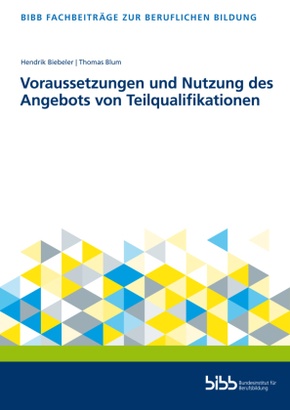Voraussetzungen und Nutzung des Angebots von Teilqualifikationen
| Verlag | Verlag Barbara Budrich |
| Auflage | 2024 |
| Seiten | 36 |
| Format | 21,0 x 29,7 x 1,1 cm |
| Gewicht | 160 g |
| Reihe | Fachbeiträge zur beruflichen Bildung |
| ISBN-10 | 384742856X |
| ISBN-13 | 9783847428565 |
| Bestell-Nr | 84742856A |
Teilqualifikationen stellen für Menschen über 25 Jahren in unterschiedlichen Lebenslagen einen sehr interessanten Weg dar, um erneut auf dem Arbeitsmarkt Fuß zu fassen oder um von einer Helfertätigkeit in eine Beschäftigung auf dem Niveau einer Fachkraft zu wechseln. Leider verhalten sich potenzielle Teilnehmende und Unternehmen mit ungestilltem Arbeitskräftebedarf diesbezüglich zumeist eher passiv. Damit es zur Nachqualifizierung über Teilqualifikationen kommt, braucht es deshalb Förderer dieses Instruments auf regionaler Ebene, am besten in der Arbeitsverwaltung, und viele vom Instrument Teilqualifizierung überzeugte Mitstreiter/-innen bei Kammern und Bildungsträgern, gegebenenfalls auch bei Personaldienstleistern und eben auch auf Arbeitgeber- wie auf Arbeitnehmerseite. Sobald die Initialzündung stattgefunden hat, ist Mundpropaganda für die Verbreitung und den Erfolg des Instruments äußerst hilfreich.
Partial qualifications are a very interesting way for people over the age of 25 in various life situations to regain a foothold in the labour market or to switch from an unskilled job to employment at the level of a skilled worker. Unfortunately, potential participants and companies with unmet labour needs tend to be passive in this regard. In order to achieve post-qualification via partial qualifications, this instrument therefore needs promoters at regional level, preferably in the labour administration, and many supporters of the partial qualification instrument at chambers and training providers, possibly also at personnel service providers and also on the employer and employee side. Once the initial spark has been ignited, word of mouth is extremely helpful for the dissemination and success of the instrument.

